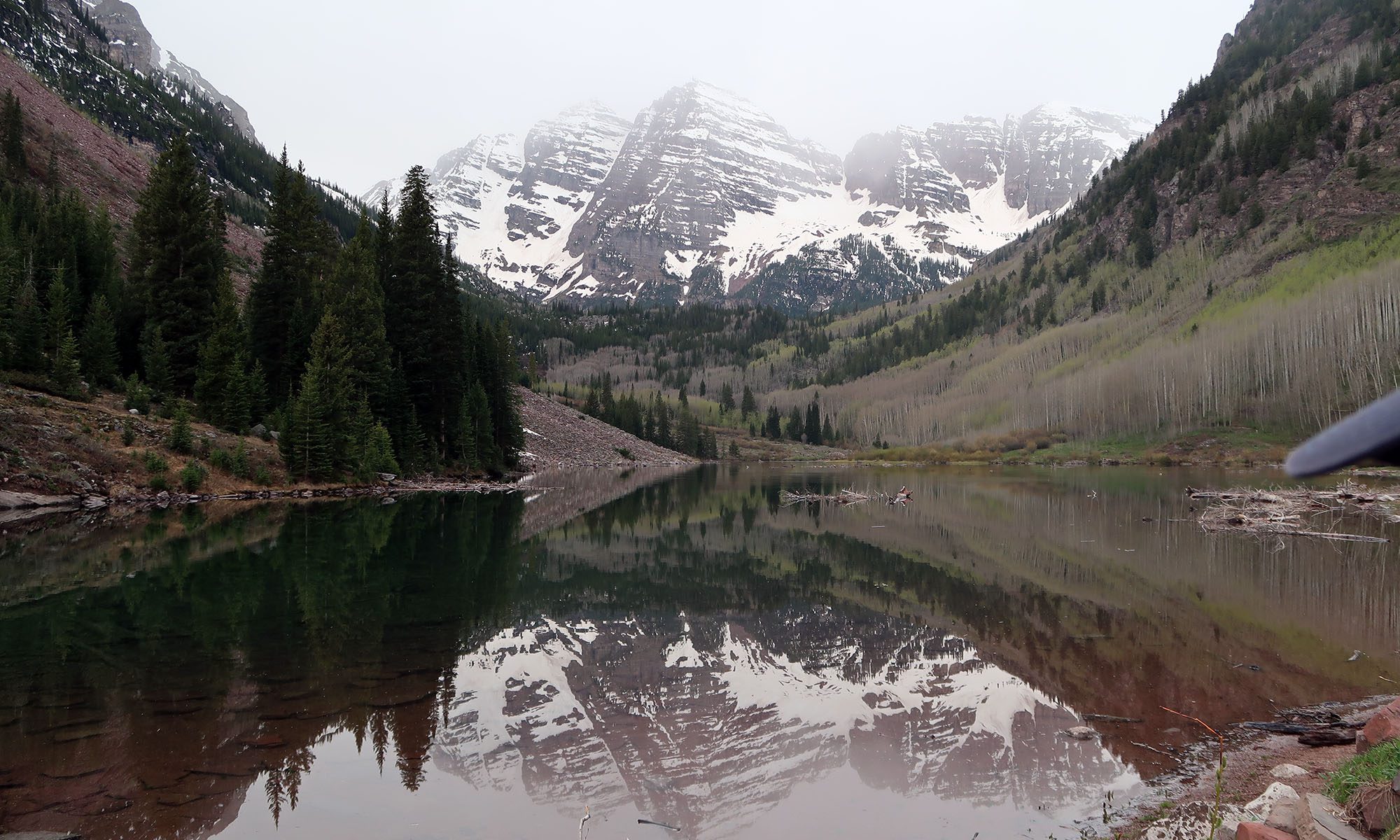May 31, 2021
Arrival at Maroon Lake
Maroon Lake sits tucked away in the Elk Mountains, just southwest of Aspen, Colorado. A paved roadway winds its way up the narrow valley from town to the trailhead, just above 9,500′ above sea level. The trailhead serves as a portal to the vast Maroon Bells-Snowmass Wilderness—a favorite among backpackers and alpinists alike.
We arrived, prior to 8 am (as per the instructions on our permit) on damp, green Memorial Day. During peak season, the general public needs to arrive by bus at Maroon Lake. But in the shoulder season, you can apply for a permit to drive to the lake. Knowing my parents would be in town that weekend, I logged on at the precise date and time when permits would become available, and refreshed my browser incessantly until I had acquired one.

Maroon Lake is a stunning place to visit. But it’s also notoriously crowded and difficult to access. Aside from arriving by bus (in summer) or car (in the shoulder season), you can cross country ski or snowshoe up the roadway in winter to visit the frozen lake. The road is closed to car traffic then, but a local ranch also offers snowmobile tours.
The Deadly Bells
Maroon Lake is actually the larger and lower-elevation of two lakes in this narrow valley. It sits at the terminal of the access road, framed by steep valley walls on either side. And straight ahead, seemingly right in front of you (but actually miles way) are the Maroon Bells: perhaps Colorado’s most charismatic 14ers. The vast majority of folks visiting this site are content strolling the lake(s), or perhaps trekking through the adjacent wilderness area. But a smaller subset of adventurers use it to access the summits of the Bells along with nearby Pyramid Peak.

Luckily for me (and my parents), our goal that morning was a much less treacherous target: Crater Lake.

Hiking from Maroon Lake to Crater Lake
While hardly any sort of mountaineering challenge, the hike from Maroon to Crater Lakes still requires some time, effort, and planning. The trail rises roughly 700 vertical feet in just over 1.75 miles (one way). Although you’re simply “walking through the valley” that translates to a vertical rise of roughly 70 stories. The trail remains easy to follow throughout, with a mixture of open rocky patches and denser forest.

The aspen groves en route to Crater Lake are gorgeous. Spend any time in the lower valleys amidst the Elk Mountains and you quickly discover how the famous nearby silver-mining town got its name. We were sadly a bit too early for spring foliage. And perhaps the best time to do this hike is during late September/Early October when the leaves turn bright yellow. But at any time of year, it’s an amazing experience.

We went slowly since my parents were coming from sea level. The trail was full of a broad mix of folks, but mostly out-of-towners in need of ample breaks to huff and puff. The route seems just long enough to make the casual hiker feel like they’ve really earned the Crater Lake views.
Crater Lake
Finally, the trail descends slightly into the bowl containing Crater Lake. The Maroon Bells loom large over this much closer body of water.

We sat for a while, resting up and soaking in the alpine views. Then it was time to retrace our steps back to the trailhead. Slowly but surely, we descended through the valley towards Maroon Lake.
The whole affair took a couple of hours. By the time we were back, the mid-morning sun had burned away the thin cloud cover. The bright sunlight lit up the snowy rock facets of the Bells, which in turn reflected off the placid waters of Maroon Lake.


